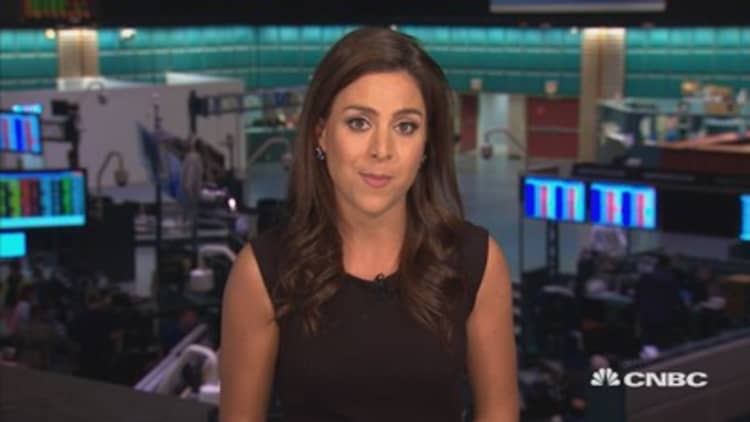Slumping global commodity prices are typically seen as a boon for India, a country that relies heavily on oil imports to service its energy needs, but a closer look indicates it's not all good news.
That's because least 35 percent of India's exports come from commodities-linked products including refined petroleum, gold jewelry, gems, iron and steel. While typically lower input costs should burnish profits for these companies, prices of the final goods Indian manufacturers crank out have also slumped.
"India's miners are seeing sharp contraction in their earnings, agriculture commodity producers are seeing their earnings affected due to the weak price of agriculture products, and the gems/jewelry sector is undergoing a major downturn," said Taimur Baig, chief economist at Deutsche Bank.
The export value of refined fuels – which make up nearly one-fifth of total exports - is down 51 percent on-year this fiscal year, for example, amid falling prices and weak demand. Similarly, gold jewelry exports are down 20 percent on year, while iron and steel exports are down 30 percent, according to the bank.
Of India's top five export destinations – the U.S., United Arab Emirates, Hong Kong, China and Saudi Arabia - exports to China have slowed the most, followed by Saudi Arabia.
While India is not nearly as export-oriented economy compared with many of its Asian neighbors, exports account for a sizable portion of its gross domestic product (GDP) - approximately 15 percent.

Thus, "benefits from lower prices and import costs are being offset by weakness in the domestic commodity sector," Baig said.
"It is clear that India's growth recovery is unlikely to be supported by a vigorous rebound in the external sector anytime soon. Therefore, it is evident that domestic demand would have to play a bigger role in supporting India's growth recovery in this cycle, mainly though a meaningful turnaround in capex and investment," he added.
Banking sector risks
Not only is the commodities slowdown weighing on India's exports, which tanked a whopping 20.7 percent on year in August, it also poses a threat to the country's banking sector.
"India's banks have sizable legacy exposure to stressed sectors such as steel, mining, and infrastructure; their recent loan growth has also been largely toward these sectors," said Baig.
"The commodity headwind is pushing up likelihood of further NPLs [non-performing loans], casting a shadow on the banking system," he said.
Read More Why it could get even worse for materials stocks
India's state-owned lenders are already struggling with deteriorating asset equality as a result of the economy's slowdown in recent years and stalling of large infrastructure projects.
Monetary policy challenge
The correction in commodity prices is also overstating disinflation in India, says Baig, posing a challenge for monetary policy.
"Pressure on the RBI [Reserve Bank of India] has risen considerably to ease policy interest rates. Non-commodity prices, however, are hardly in benign territory," Baig said.
"Education costs were up 6 percent on year through August and the same was with clothing. Thus the issue of how much room is available for the central bank to cut rates with a view to its medium term inflation objective of around 4 percent is being complicated by commodity price driven disinflation," he said.
The RBI is due to hold its next policy meeting on September 29, when it is expected to cut interest rates by 25 basis points to a four-year low of 7 percent. It has reduced its key policy rate a total of 75 basis points this year, standing pat at its last policy review in August.



